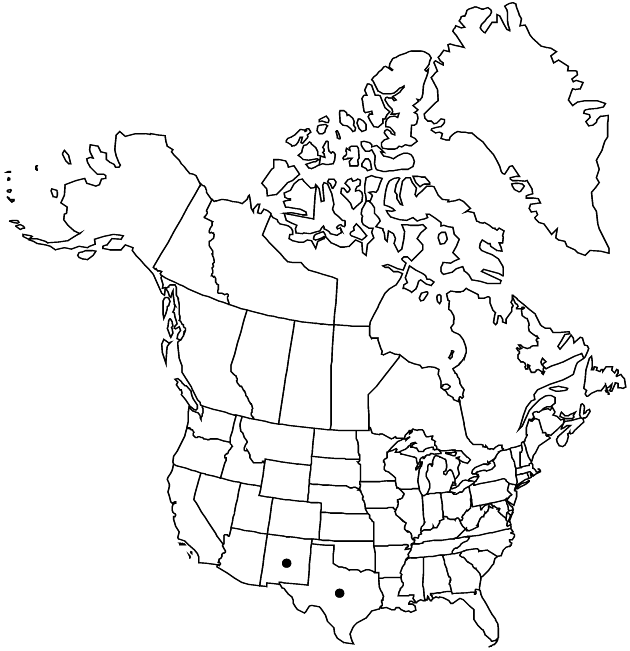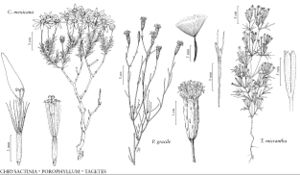Difference between revisions of "Chrysactinia mexicana"
Mem. Amer. Acad. Arts, n. s. 4: 93. 1849.
Illustrated
Treatment appears in FNA Volume 21. Treatment on page 232.
imported>Volume Importer |
imported>Volume Importer |
||
| Line 49: | Line 49: | ||
|publication year=1849 | |publication year=1849 | ||
|special status=Illustrated | |special status=Illustrated | ||
| − | |source xml=https:// | + | |source xml=https://bitbucket.org/aafc-mbb/fna-data-curation/src/2e0870ddd59836b60bcf96646a41e87ea5a5943a/coarse_grained_fna_xml/V19-20-21/V21_566.xml |
|tribe=Asteraceae tribe Heliantheae | |tribe=Asteraceae tribe Heliantheae | ||
|subtribe=Asteraceae (tribe Heliantheae) subtribe Pectidinae | |subtribe=Asteraceae (tribe Heliantheae) subtribe Pectidinae | ||
Latest revision as of 20:13, 5 November 2020
Plants twiggy. Leaf blades 5–10(–23) × 1–2 mm. Peduncles 15–75 mm (heads usually held well beyond foliage). Ray laminae 6–12 × 2–4 mm. Disc corollas 4.5–7 mm. Cypselae 3–4 mm; pappi 3–5.5 mm. 2n = 45.
Phenology: Flowering spring–fall.
Habitat: Mostly on limestone and derived soils
Elevation: 200–2200+ m
Distribution

N.Mex., Tex., Mexico.
Discussion
Selected References
None.
Lower Taxa
None.
